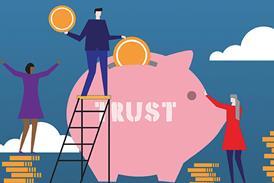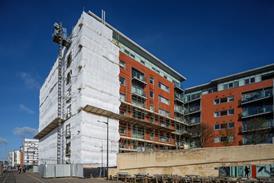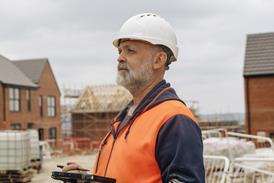Meena Kamath of The Chancery Lane Project outlines how you can drive climate-conscious property transactions

Commercial property clients are increasingly focused on meeting sustainability requirements. This isn’t just because they want to do the right thing for the planet; investors and stakeholders are increasingly demanding action as climate change can present substantial business risks. With a likely surge in sustainability regulations by the end of the decade, clients want to be prepared. There is a growing awareness of legal contracts as a critical – though often overlooked – instrument in the fight against the climate crisis and the mitigation of associated business risks.
As a property lawyer, it can be difficult to know what to do in day-to-day transactions regarding climate change. The Law Society has recently published Climate change and property practice note for conveyancers outlining the important steps you can take to help protect your clients from climate risk.
The guidance advises lawyers to consider whether their client may want to include any net zero targets, transition plans or climate goals in the contract suite (such as in sale contracts, licences to alter, development agreements or agreements for lease).
Foundation for climate action
Embedding climate considerations into real estate transactions is a process that requires attention throughout both the pre-contract and transaction phases.
During the pre-contract phase, start by understanding your client’s sustainability priorities. Whether at the pitch stage for a new client or in the period between deals for a regular client, it is worth raising the climate question with them. You could ask them if they have net-zero targets, or whether they have climate-related plans that they’d like you to bear in mind. This allows you to tailor your advice appropriately and will build your relationship with the client, showing you value their priorities. Do be careful with the timing of these queries – your client won’t usually thank you for raising this in the middle of a busy period. But if timed correctly, you can ensure your client sees you as a key partner on their sustainability journey.
Additionally, it is essential to build your knowledge of climate terminology and issues, as climate concerns continue to impact real estate. Looking ahead, all property lawyers will need to start factoring climate change into their legal advice. Research from The Chancery Lane Project (TCLP) highlights that many private practice lawyers feel underprepared when advising on climate-related matters, so proactively educating yourself can set you apart from competitors.
Now is the time to start educating yourself on key terms that your clients are probably already familiar with – learn about why scope 3 emissions are harder to reduce compared to scopes 1 and 2, what embodied carbon really means, and so on. Resources like TCLP’s glossary, which clarifies climate jargon in legally adaptable ways, or the UK Green Building Council’s guides on decarbonisation for the built environment are helpful starting points.
Embedding climate into legal documents
There are several points during a transaction where climate-aligned clauses should be incorporated into your documentation. A useful way to navigate and visualise how clauses can fit into the transaction life cycle is by using the interactive clause selector toolkit, developed by TLT LLP.
It is important to conduct climate-aligned due diligence. One common question property lawyers face is whether to conduct a climate search on properties. The Law Society climate change guidance for conveyancers provides some pointers on what to consider. It doesn’t mandate whether you should or shouldn’t carry out a search – you will need to consider this on a property- and client-specific basis. It would be prudent to at least consider whether a search is required on each transaction and ask each client about their due diligence expectations concerning the legal aspects of climate risk. This is even more important for properties that may be more vulnerable to the physical effects of climate change (such as coastal properties).
Reports on title should reflect climate factors relevant to the property, including flood risk, environmental risk profiles and energy efficiency. If you do choose to carry out a climate search, you should include standard wording in your report on title, such as TCLP’s Marni’s clause. For the acquisition of an operational investment asset, you should also report on any climate terms in existing documents, such as leases or property management agreements.
Incorporating climate-aligned clauses into transaction documents can play a significant role in advancing sustainable practices in real estate deals. Development documents for projects, particularly those with substantial urban impact, provide an opportunity to include climate clauses tied to circular economy principles and sustainable on-site practices. For example, TCLP’s Aatmay’s clause addresses circular economy strategies while Ashkan’s clause offers guidance on sustainable practices at development sites. The NEC’s X29 clause may provide additional support, particularly in aligning project requirements with climate-related goals.
Letting documents, such as new leases or renewals, present another chance to adopt green lease provisions. The Better Buildings Partnership’s Green Lease Toolkit is a valuable resource, offering a range of adaptable clauses from light to dark green. Updated in 2024, with widespread industry support and collaboration, this toolkit supports the inclusion of sustainability-focused provisions in bespoke commercial leases.
Financial documents can also support climate initiatives, even if your firm is not directly advising on financing aspects. For clients purchasing with debt, it’s wise to check whether the lender has set any sustainability metrics. Sustainability-linked loans often involve such metrics, and some lenders may require climate-related disclosures as part of the certificate of title. TCLP’s Tomas’s disclosure checklist can ensure that certificates of title meet lender expectations for climate transparency.
Sustainability regulations
Although a property lawyer will not typically advise on this, it’s important to be aware that sustainability regulations are constantly evolving. With the Corporate Sustainability Reporting Directive (CSRD) and the Corporate Sustainability Due Diligence Directive (CSDDD) on the horizon, contracts could help businesses prepare for and comply with these changes by putting certain requirements into effect. Both directives aim to improve corporate accountability and transparency, but the CSRD focuses on reporting, while the CSDDD emphasises due diligence in sustainability. Asking your clients whether they have considered these directives or need any legal support can provide opportunities for bringing in other experts in your firm.
Advised emissions
It’s worth noting that increasing attention is being paid to “advised emissions”, explored in more detail in the April 2023 Law Society climate change guidance. Briefly, it’s the idea that a law firm’s greatest emissions come not from heating or cooling their building, or business travel, but from emissions associated with matters on which a solicitor provides legal advice. Acting and advising in a more climate-conscious way can help to reduce your firm’s advised emissions, which are likely to come under greater scrutiny in the coming months and years.
Conclusion
As lawyers, we are not qualified to opine on valuation or report on the science behind climate change. However, it’s appropriate for us to factually identify where the negative effects of climate change could potentially affect value. This is similar to how we already assess risks such as flood exposure, environmental hazards and other technical risks in our legal advice. It is possible – and necessary – to identify and advise on climate risk without stepping outside the boundaries of legal advice.
Taking some of the steps outlined in this article can lead to a more holistic, value-added client-lawyer relationship. These steps are not comprehensive, nor do we suggest that you do them all; your advice must always be client- and asset- appropriate. However, it’s important to recognise that the role of a property lawyer is evolving, and even without doing something radical, we can help to mitigate climate risk for our clients and ourselves.
This article was first published in the December 2024 issue of Property in Practice but has been updated since the Climate change and property practice note was published in May 2025.




















